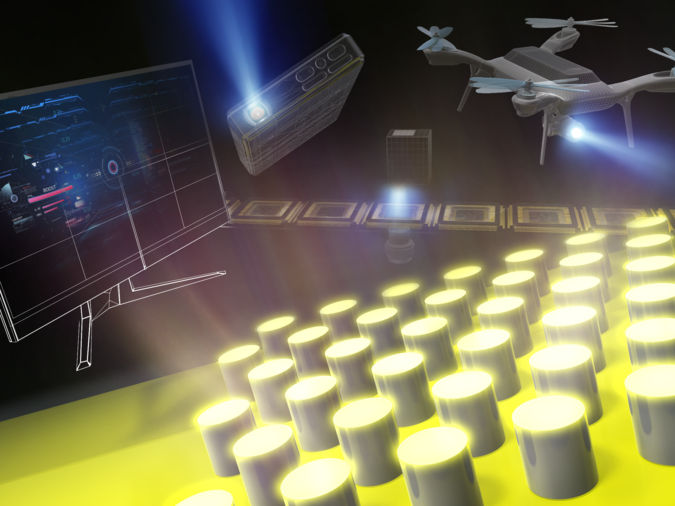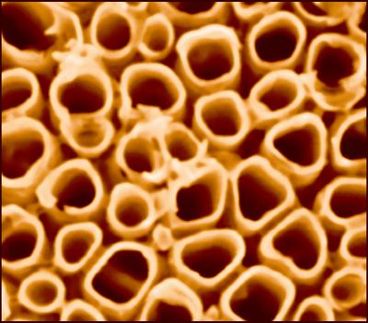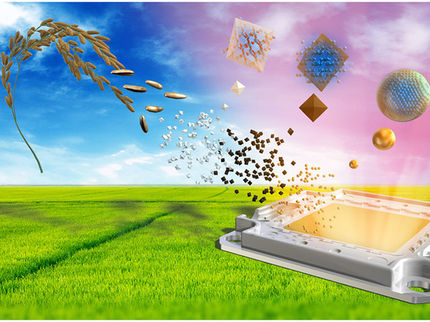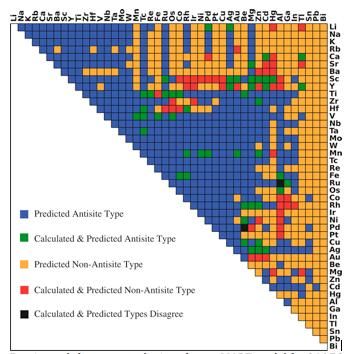Nanoantennas directing a bright future: White LEDs may soon be dethroned
Titanium oxides found to significantly increase efficiency and photoluminescence
White LEDs may soon be dethroned as the world's go-to light source by an alternative with a much better sense of direction.

Nanoantenna phosphors comprising of a periodic array of nanoparticles on the phosphor plate can tailor the spatial radiation pattern of the photoluminescence for smaller, lighter and brighter solid-state lighting devices.
KyotoU/Shunsuke Murai
As a next-generation optical control technology, a photonic crystal or nanoantenna is a two-dimensional structure in which nano-sized particles are arranged periodically on a substrate. Upon irradiation, the combination of a nanoantenna with a phosphor plate achieves an ideal mix of blue and yellow light.
White LEDs have already been improved upon in the form of white laser diodes, or LDs, which consist of yellow phosphors and blue LDs. While the blue LDs are highly directional, the yellow phosphors radiate in all directions, resulting in an undesired mixing of colors.
To address this issue, researchers have developed phosphor plates combined with nanoantennas using metallic aluminum, enabling increased photoluminescence. Aluminum nanoparticles effectively scatter light and improve light intensity and directionality; however, aluminum also absorbs light, reducing the output. This is a major bottleneck, especially in high-intensity lighting applications.
Now, a team of researchers at Kyoto University has achieved a ten-fold enhancement of forward-directed photoluminescence by replacing aluminum with a better material.
"It turns out that titanium dioxide is a better choice for its high refractive index and low-light absorption," says lead author Shunsuke Murai.
Although the light-scattering intensity of titanium oxide initially appeared inferior to metallic aluminum, the team used computer simulations to devise the optimal nanoantenna design.
"The new nanoantenna phosphors are advantageous for intensely bright yet energy-saving solid-state lighting because they can suppress temperature rise when irradiated," explains Murai.
"During the process of finding the optimal dimensions, we were surprised to discover that the thinnest phosphors gave the brightest photoluminescence, demonstrating how to increase the forward radiation intensity and overall performance."
Original publication
Other news from the department science

Get the chemical industry in your inbox
By submitting this form you agree that LUMITOS AG will send you the newsletter(s) selected above by email. Your data will not be passed on to third parties. Your data will be stored and processed in accordance with our data protection regulations. LUMITOS may contact you by email for the purpose of advertising or market and opinion surveys. You can revoke your consent at any time without giving reasons to LUMITOS AG, Ernst-Augustin-Str. 2, 12489 Berlin, Germany or by e-mail at revoke@lumitos.com with effect for the future. In addition, each email contains a link to unsubscribe from the corresponding newsletter.





























































